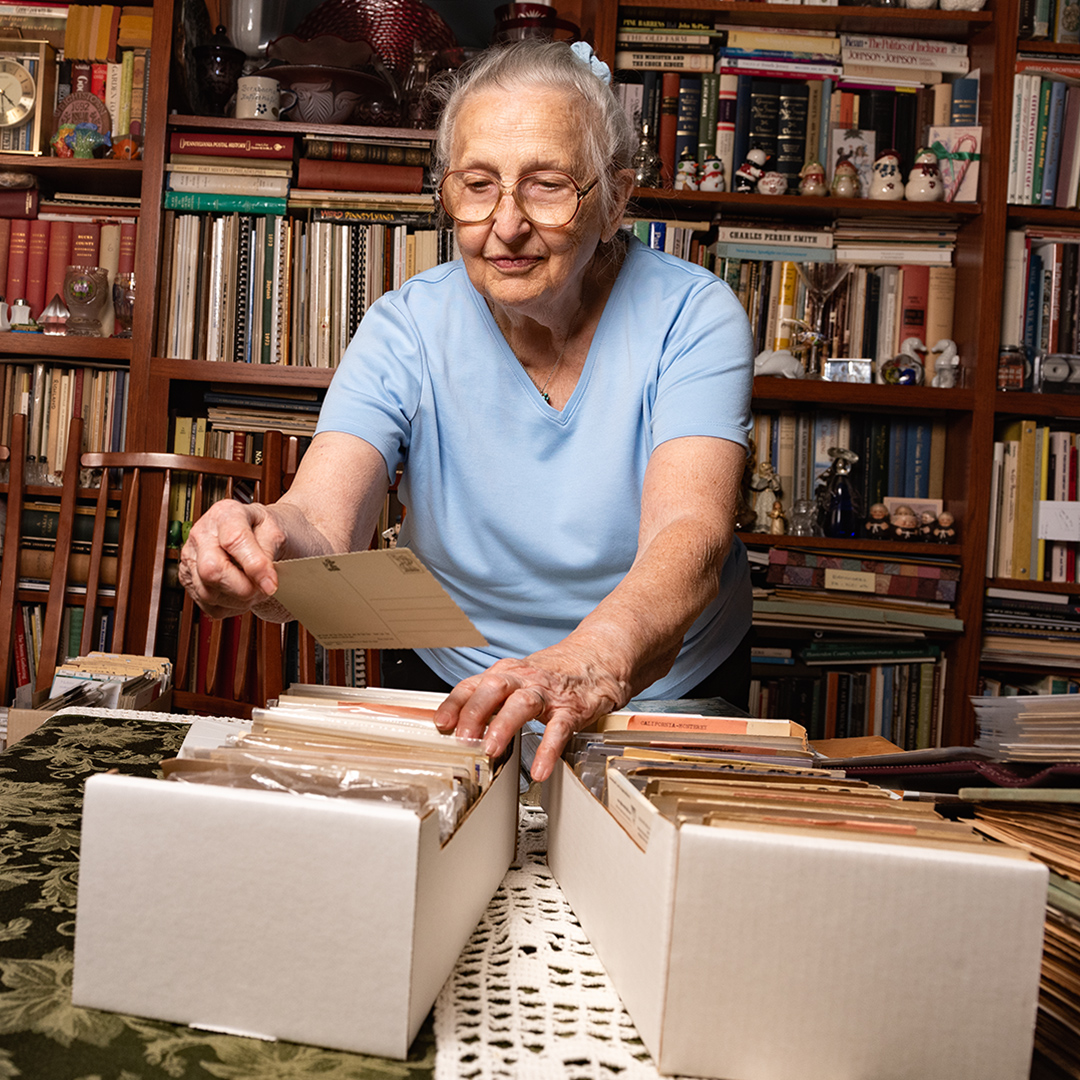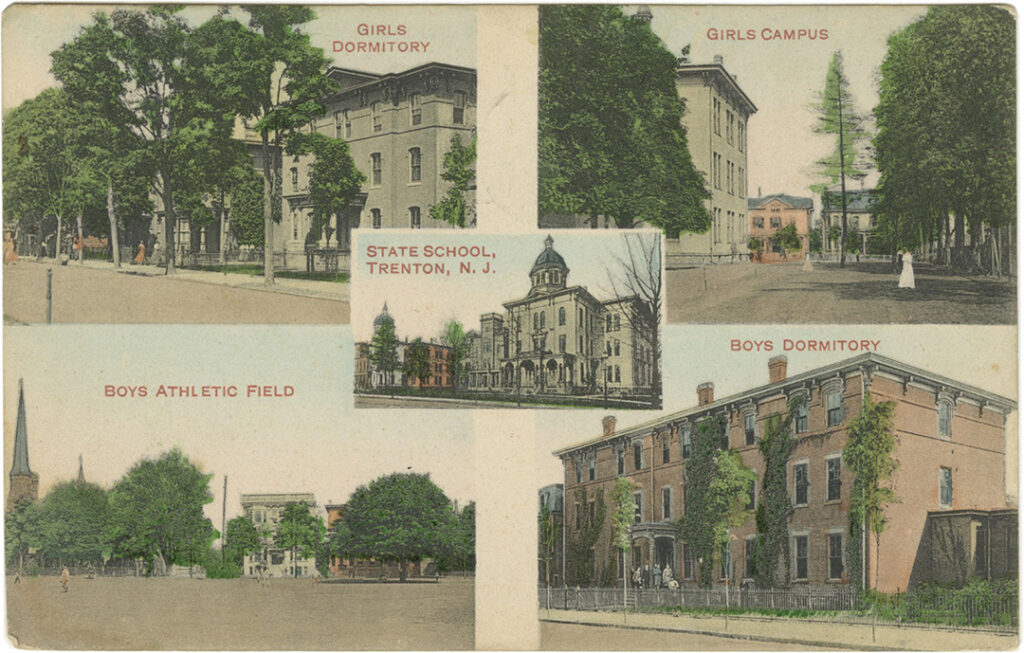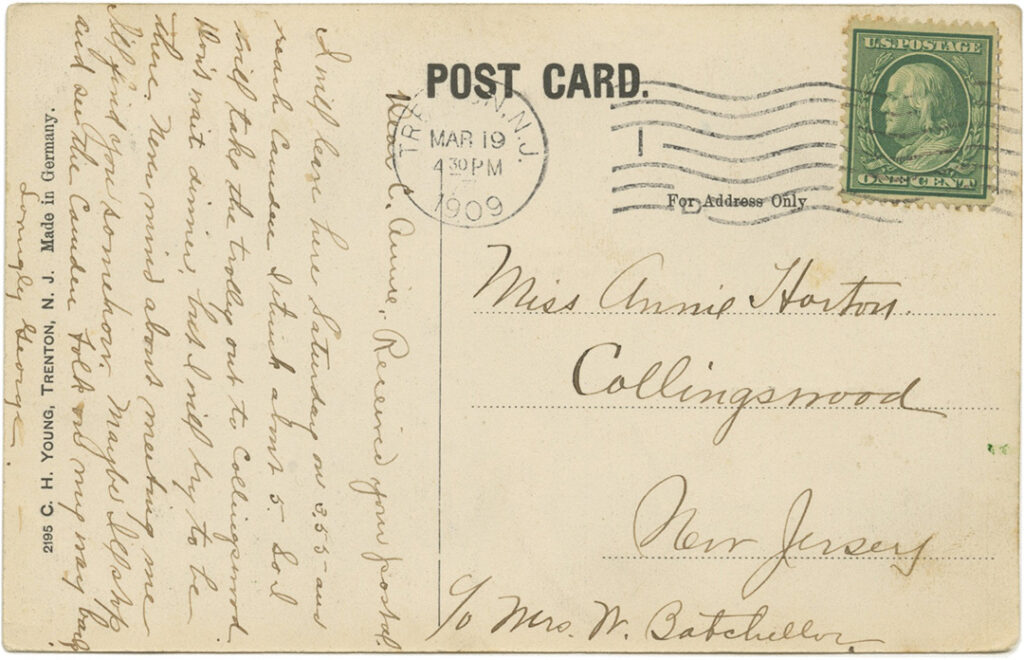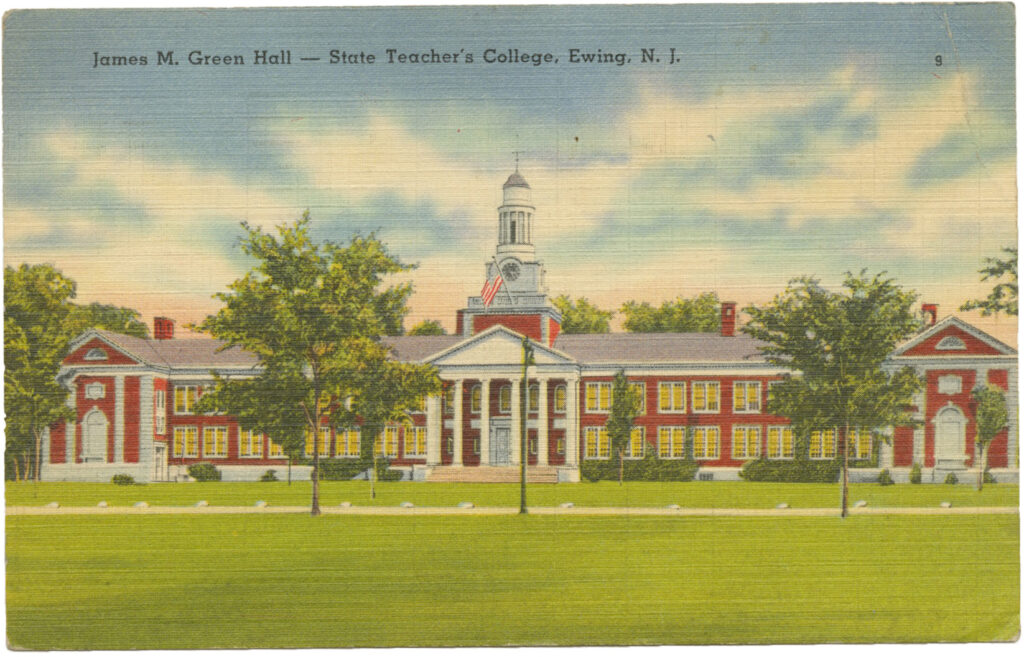P.S. I love you
Betty Davis’ postcard collection is worth a thousand words.

Betty Davis, postcard collector and TCNJ alumna at home with her extensive collection in Wrightstown Township, PA.
When asked how many postcards she has collected, Betty Davis ’55 simply answers, “Too many.” It’s a hobby she began in childhood when she would save cards that friends sent and ones that she bought on her own. “Every five and dime had a rack of them for a penny a piece,” she says. By the time she was 10 years old she was a member of the Post Card Collectors Club of America.
Now, a longtime member of the Washington Crossing Card Collectors Club, which she helped start in 1972, Davis has tens of thousands of cards in shoeboxes and albums lining the shelves in her dining room in Wrightstown, Pennsylvania. “I have no intention to count them,” she says.
Postcards became popular in the United States in the early 1900s as a way to relay simple messages (“I’ll be on the 3 o’clock train”) or to show pride for your hometown main street. “Every church in town was on a postcard,” says Davis. In many ways, they became portraits of American life.
Likewise, postcards have preserved a slice of campus life here at the college, too. This is something Sharon Blanton, TCNJ’s vice president for operations, discovered while perusing a stack of postcards in a local antique shop.
“I started to see a few from TCNJ,” says Blanton. “I always like to see vintage photos of campus, but what really grabbed my attention were the personal notes.”
Comparing it to the way we send quick text messages today, Blanton says the messages were fairly informal. “They might be about the weather, or something they did in the area. They show what was important to a person at the time.” She bought a few with messages that moved her.
Davis took a peek at Blanton’s cards, and some TCNJ cards in her own collection. She shares a bit of insight and history here.



Posted on May 30, 2024

